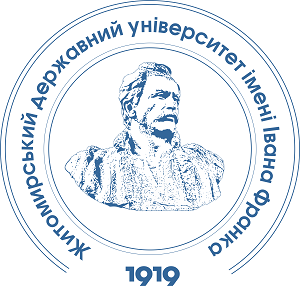ANALYSIS AND MODELING OF PHYTOTOXICITY OF CHERNOZEM SOIL CONTAMINATED WITH OIL PRODUCTS
DOI:
https://doi.org/10.32782/naturaljournal.12.2025.37Keywords:
soil, oil products, phytotoxicity, test plants, pollutionAbstract
The article discusses the problem of soil pollution by oil products and their impact on soil phytotoxicity, which is a key indicator for assessing the ecological state of natural environments. Soil phytotoxicity is defined as its ability to negatively affect seed germination and plant development, which is an important indicator of pollution. The influence of different concentrations of petroleum products on radish seed germination and morphological parameters of test plants, such as sprout length, was analyzed. The experimental data demonstrate a clear relationship between the level of soil contamination and inhibition of seed germination. The highest rate of seed germination (76,0%) was observed on clean soil, while with an increase in the concentration of the pollutant to 10 g/kg, this figure decreased to 30,0%. At extremely high contamination (100 g/kg), no plant germination occurred at all. A similar trend was observed for biometric indicators. In particular, on the seventh day on clean soil, the length of the sprouts averaged 3,5 cm, and significantly decreased to 1,5 cm in the variant with a pollution concentration of 10 g/kg of soil. At a high level of pollution, plant germination did not occur at all. On day 10, a gradual decrease in the length of the sprouts was observed with an increase in the concentration of the pollutant – from 7,8 cm on clean soil to 6,6 cm with pollution at 1,0 MPC. A significant decrease in this parameter compared to clean soil was observed with an increase in the concentration of pollution to 10,0 MPC and 100 MPC. The phytotoxicity of the soil, determined by length of sprouts, increased as the test plants grew and depended on the concentration of pollution. With minimal soil contamination (0,5–1,0 MPC), the level of phytotoxicity was 6,6–15,0%, depending on the variant and day of observation. At a concentration of 10,0 g/kg, the phytotoxicity reached 35,0%, and at 100,0 g/kg – a critical level (77,0–100,0%), which makes the soil practically unsuitable for normal plant development.The results emphasize the high sensitivity of plants to the presence of oil products in the soil. Oil products can disrupt the water regime of the soil, reduce the availability of nutrients and create toxic conditions that inhibit cellular respiration and cell division during germination. In addition, petroleum products form a dense oil film on the soil surface, which prevents oxygen from reaching the seeds. Toxic substances can penetrate into the cells, disrupting the functioning of enzyme systems necessary for germination and further growth.
References
Бабаджанова О.Ф., Сукач Ю.Г., Сукач Р.Ю. Фітотоксичність ґрунтів, забруднених дизельним паливом. Науковий вісник Національного лісотехнічного університету України. 2017. № 3. С. 92–94.
Боднарюк Р.М., Вакерич М.М., Петросова В.І., Ніколайчук В.І., Гасинець Я.С. Вплив забруднення нафтопродуктами на мікробіоценоз ґрунту та фітотоксичний ефект в умовах Ужгородського району Закарпаття. Науковий вісник Ужгородського університету. 2017. Вип. 42. С. 86–93.
Балюк С.А., Кучер А.В., Ромащенко М.І. Ґрунтовий покрив України в умовах воєнних дій: стан, виклики, заходи з відновлення : монографія. Київ : Аграрна наука, 2024. 340 с.
Диняк О.В., Кошлякова І.Є. Потенційна небезпека для довкілля та населення від нафтохімічного забруднення геологічного середовища внаслідок бойових дій. Екологічні науки. 2023. № 6 (51). С. 136–141. https://doi.org/10.32846/2306-9716/2023.eco.6-51.22.
Жолобак Г.М., Дугін С.С., Сибірцева О.М., Дорофей Є.М. Дослідження нафтозабрудненого ґрунту і рослинного покриву, вирощеного на ньому, методом гіперспектрального дистанційного зондування із застосуванням спектрорадіометра ASD FieldSpec®3FR. Український журнал дистанційного зондування Землі. 2018. № 19. С. 12–29.
Колєснікова Л.А., Федюшко М.П. Аналіз фітотоксичності нафтозабруднених ґрунтів. Вісник Полтавської державної аграрної академії. 2015. № 1–2. С. 41–43. https://doi.org/10.31210/ visnyk2015.1-2.07.
Крайнюков О.М., Кривицька І.А., Хоменко А.С. Оцінка впливу виробничої діяльності нафтопереробного підприємства на екологічний стан ґрунтового покриву. Молодий вчений. 2020. № 5 (81). С. 307–312. https://doi.org/10.32839/2304-5809/2020-5-81-62.
Круглов О.В., Коляда В.П., Корчашкіна Л.А. Сучасна технологія прогнозу забруднення довкілля засобами захисту рослин та добривами у результаті поверхневого стоку. Збірник матеріалів Звітної науково-практичної конференції Луганського національного аграрного університету. Харків : Стильна типографія, 2018. С. 18–20.
Мандрик О.М., Лукинчук О.І. Удосконалення способу очищення ґрунту забрудненого нафтопродуктами. Збірник наукових праць Уманського національного університету садівництва. 2023. Вип. 103. С. 273–281. https://doi.org/10.32782/2415-8240-2023-103-1-273-281.
Романюк О.І., Шевчик Л.З., Ощаповський І.В., Жак Т.В. Методика екологічного оцінювання нафтозабруднених ґрунтів. Вісник Дніпропетровського університету. Серія «Біологія, екологія». 2016. № 24 (2). С. 264–269.
Шевчик-Костюк Л.З., Романюк О.І., Ощаповський І.В. Особливості забруднення ґрунтів нафтою та нафтопродуктами : огляд. Acta Biologica Ukrainica. 2022. № 1. С. 32–40. https://doi.org/ 10.26661/2410-0943-2022-1-04.
Agamuthu P., Abioye O.P., Aziz A. Phytoremediation of soil contaminated with used lubricating oil using Jatropha curcas. Journal of Hazardous Materials. 2010. Vol. 179. № 1–3. P. 891–894. https://doi.org/10.1016/j.jhazmat.2010.03.088.
Balseiro-Romero M., Monterroso C., Casares J. Environmental fate of petroleum hydrocarbons in soil: review of multiphase transport, mass transfer, and natural attenuation processes. Pedosphere. 2018. Vol. 28. № 6. P. 833–847. https://doi.org/10.1016/S1002-0160(18)60046-3.
Haider F.U., Ejaz M., Cheema S.A., Khan M.I., Baowei Zhao, Cai Liqun, Salim M.A., Naveed M., Khan N., Núñez-Delgado A., Mustafa A. Phytotoxicity of petroleum hydrocarbons: Sources, impacts and remediation strategies. Environmental Research. 2021. Vol. 197. P. 111031. https://doi.org/10.1016/j.envres.2021.111031.
Krainiukov O., Miroshnychenko I., Sіabruk O., Hladkikh Y. Effect of oil contamination on the course of changes in chernozem properties and phytotoxicity. Visnyk of V.N. Karazin Kharkiv National University. Series “Geology. Geography. Ecology”. 2022. № 57. P. 296–306. https://doi.org/10.26565/2410-7360-2022-57-22.
Taheri M., Motesharezadeh B., Zolfaghari A., Javadzarrin I. Phytoremediation modeling in soil contaminated by oil-hydrocarbon under salinity stress by eucalyptus : A comparative study. Computers and Electronics in Agriculture. 2018. Vol. 150. P. 162–169. https://doi.org/10.1016/j.compag.2018.04.016.






